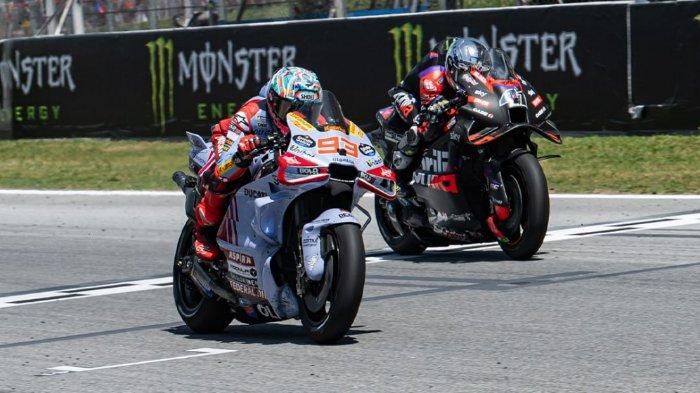How To Prepare For Flash Floods: Understanding Flood Alerts And Warnings

Table of Contents
Flash floods are a terrifying and often unpredictable natural disaster. Understanding flood alerts and warnings is crucial for protecting yourself, your family, and your property. These devastating events can strike with little to no warning, making preparedness paramount. This guide provides essential information on how to prepare for flash floods, ensuring you're ready to respond effectively when faced with this dangerous weather event. We'll cover everything from interpreting flood alerts and warnings to creating a comprehensive emergency plan and taking immediate action when a flash flood threatens.
<h2>Understanding Flood Alerts and Warnings</h2>
Knowing the difference between flood alerts and warnings is the first step in effective flood preparedness. These alerts, issued by meteorological agencies like the National Weather Service (NWS), are designed to give you the information you need to stay safe.
<h3>The Difference Between a Watch and a Warning</h3>
Understanding the urgency conveyed by each alert is critical for your safety. Here's a breakdown:
- Watch: A flood watch means conditions are favorable for flash flooding to develop. This isn't a time to relax; it's a time to prepare. Monitor weather reports closely and be ready to act quickly if a warning is issued.
- Warning: A flood warning indicates that flash flooding is either imminent or already occurring in your area. This is a critical alert requiring immediate action. Evacuate if instructed to do so.
- Advisory: A flood advisory signifies that flooding is possible. While less urgent than a warning, it still means you should be aware of the conditions and monitor the situation carefully.
These alerts are typically disseminated through various channels, including:
- National Weather Service (NWS) website and mobile app: The official source for weather information, offering detailed forecasts and alerts tailored to your location.
- Local news channels and websites: Your local news provides up-to-the-minute coverage of severe weather events affecting your community.
- Wireless Emergency Alerts (WEA): These emergency alerts are pushed directly to your mobile device, providing immediate notification of impending danger. Ensure your phone's emergency alert settings are enabled.
- Your local government's emergency management agency: These agencies provide specific local guidance and instructions during emergencies.
<h3>Finding Reliable Sources for Flood Information</h3>
Relying on trustworthy sources is paramount during a flash flood event. Misinformation can be dangerous. Prioritize official channels to ensure you receive accurate and timely flood information. Sign up for emergency alerts from your local government and the NWS to be prepared for quick notification.
<h2>Creating a Flash Flood Preparedness Plan</h2>
A well-defined plan significantly increases your chances of surviving and minimizing damage from a flash flood. This plan should include evacuation procedures and an emergency kit.
<h3>Developing an Evacuation Plan</h3>
Having a pre-planned evacuation route is vital to avoid confusion and delays during a flash flood emergency. Your plan should include:
- Identifying evacuation routes: Research multiple routes out of your area, considering potential road closures.
- Designating a meeting place: Choose a location outside the flood zone where family members can reunite after evacuation.
- Packing an emergency kit: Assemble a kit with essential supplies (detailed below).
- Knowing how to reach family members: Establish a communication plan, including alternate contact methods if cell service is disrupted.
<h3>Building an Emergency Kit</h3>
Your emergency kit is your lifeline during a flash flood. Ensure it contains:
- Water: One gallon of water per person per day for several days.
- Non-perishable food: Easy-to-prepare, high-energy foods.
- First-aid kit: Including any necessary medications.
- Flashlight and extra batteries: For illumination in the dark.
- Radio (battery-powered or hand-crank): To receive emergency broadcasts.
- Important documents (copies): Identification, insurance information, etc.
- Cash: ATMs may be unavailable.
<h3>Protecting Your Property</h3>
Taking proactive steps to protect your property can significantly reduce damage during a flash flood. Consider:
- Moving valuable items to higher ground: Furniture, appliances, and important documents should be moved to a safe place.
- Bringing outdoor furniture inside: To prevent it from being swept away.
- Clearing gutters and drains: To ensure efficient water drainage.
- Considering flood insurance: This will protect your financial investment in case of significant damage.
<h2>Responding to a Flash Flood Warning</h2>
When a flash flood warning is issued, immediate action is crucial. Every second counts.
<h3>Immediate Actions</h3>
Upon receiving a flash flood warning:
- Move to higher ground immediately: Do not delay.
- Do not attempt to drive or walk through floodwaters: Even shallow water can sweep you away. Remember the motto, "Turn around, don't drown!"
- Unplug electrical appliances: To prevent electrical shock.
- Monitor weather reports: Stay updated on the situation.
<h3>Post-Flood Actions</h3>
After the immediate danger has passed:
- Avoid floodwaters until they have receded completely: Floodwaters can be contaminated and may contain hazardous materials.
- Check for structural damage: Inspect your home for cracks, leaks, or other damage.
- Report damage to authorities: This helps assess the overall impact and facilitates recovery efforts.
- Contact your insurance company: Begin the claims process as soon as possible.
<h2>Conclusion</h2>
Being prepared for flash floods is crucial for safety and minimizing potential damage. By understanding flood alerts and warnings, developing a comprehensive preparedness plan, and taking prompt action during a flood, you significantly reduce risks. Remember to regularly review and update your flash flood preparedness plan and stay informed about weather conditions using reliable sources like the National Weather Service. Don’t wait until it's too late; prepare for flash floods today! Your life and property depend on it.

Featured Posts
-
 Moto Gp Inggris Fp 1 Marquez Dominasi Insiden Motor Mogok
May 26, 2025
Moto Gp Inggris Fp 1 Marquez Dominasi Insiden Motor Mogok
May 26, 2025 -
 Monaco Grand Prix Live F1 Timing And Results
May 26, 2025
Monaco Grand Prix Live F1 Timing And Results
May 26, 2025 -
 Atletico Madrid 3 Maclik Goez Agrisi Gecti
May 26, 2025
Atletico Madrid 3 Maclik Goez Agrisi Gecti
May 26, 2025 -
 A Evolucao Do Cinema Vista Atraves Do Trailer De Nome Do Filme
May 26, 2025
A Evolucao Do Cinema Vista Atraves Do Trailer De Nome Do Filme
May 26, 2025 -
 Kembalinya Moto Gp Ke Brasil Sirkuit Ayrton Senna Di Goiania
May 26, 2025
Kembalinya Moto Gp Ke Brasil Sirkuit Ayrton Senna Di Goiania
May 26, 2025
Latest Posts
-
 John Haliburtons Return To Pacers Games Why It Matters
May 28, 2025
John Haliburtons Return To Pacers Games Why It Matters
May 28, 2025 -
 Nba Lifts Ban John Haliburton Returns To Pacers Games
May 28, 2025
Nba Lifts Ban John Haliburton Returns To Pacers Games
May 28, 2025 -
 Promo Samsung Galaxy S25 Ultra 1 To 1294 90 E
May 28, 2025
Promo Samsung Galaxy S25 Ultra 1 To 1294 90 E
May 28, 2025 -
 Achetez Le Samsung Galaxy S25 Ultra 1 To Moins Cher
May 28, 2025
Achetez Le Samsung Galaxy S25 Ultra 1 To Moins Cher
May 28, 2025 -
 Bon Plan Smartphone Samsung Galaxy S25 Ultra 1 To
May 28, 2025
Bon Plan Smartphone Samsung Galaxy S25 Ultra 1 To
May 28, 2025
